What is CHAdeMO charging?
CHAdeMO is a rapid-charging DC standard, allowing fast charging of the Nissan Leaf, Toyota Prius Plug-In and many other models

If you’ve ever stopped at a charging station, you may have noticed a number of charging-cable options available for electric vehicles. This is because electric vehicles (EVs) and plug-in hybrid electric vehicles (PHEVs) can’t all be charged by a single standard of plug or charging speed – or at least not yet.
Hence, stations often feature different connectors to suit different cars and charging requirements. One of these connectors is the CHAdeMO standard, a rapid-charging DC connector that features on some models.. Rapid charging is the quickest way of recharging the batteries in electric cars.
What is CHAdeMO?
To understand what CHAdeMO is, you first need to understand how rapid charging works. There are several different speeds at which EVs and PHEVs can be charged. They start at low charging rates of 2 or 3kW from a three-pin socket at home , rising to 7kW rate for more advanced ‘wallbox’ charging units. Some home and public charging units also feature a faster 22kW charging rate; these are known as fast chargers. The more power a charger supplies, the faster the car’s batteries are topped up.
Then there are rapid-charging stations. Thanks to advances in battery and charging technology, these stations can supply electricity much faster. Rapid AC stations work at 43kW, while rapid DC stations supply power at 50kW or more – frequently 150kW or even 350kW these days.
The key here is that electric vehicles use DC (direct current) to power the motor, while the electric grid in the UK supplies AC (alternating current). When charging from a home AC charger, the electric vehicle’s internal converter (rectifier) turns AC power into DC, which the car is then able to use. Rapid DC chargers do the conversion in the charging booth. This means the charging station directly supplies the vehicle with DC power, without the need to first convert the power from AC to DC.
CHAdeMO is a rapid-charging DC standard, established by Toyota, Nissan, Mitsubishi and other Japanese companies in 2010. It’s an abbreviation of the words Charge de Move. The idea was to create a charging standard that would be adopted across the automotive industry, as well as other sectors relying on electrical DC charging. It became the first-ever fast-charging platform for electric vehicles, and now enables ranges from 6kW to 150kW – although the maximum available for electric vehicles at the moment is 50kW.
Which cars currently work with CHAdeMO?
As CHAdeMO was created by Nissan, Mitsubishi, Toyota, Fuki and Tokyo Electric Power Company, Japanese carmakers are some of the biggest adopters of CHAdeMO technology. In the UK, the cars that can be rapid charged with a CHAdeMO connector include the Nissan Leaf, Mitsubishi Outlander PHEV, Toyota Prius Plug-In, Tesla Model S (when fitted with an adapter), Nissan e-NV200, Kia Soul EV Mk1, Citroen Berlingo Electric Mk1, Citroen C-Zero and the LEVC London Taxi.
Is CHAdeMO the only rapid-charging standard?
If you’re using the charging type filter on Zap Map, you’ll note that all charging stations with a CHAdeMO connector also feature a CCS rapid-charging connector. This is a competing rapid DC connector standard developed by various German carmakers. It stands for Combined Charging System, and was introduced in 2012 by Volkswagen, Audi, BMW, Mercedes, General Motors, Ford, Daimler and Porsche.
The CCS standard has become much more popular than CHAdeMO in Europe, as car makers such as VW, BMW and Mercedes continue to introduce new electric models to the market. More recently introduced models from Asian brands, such as the Hyundai Kona Electric, use the CCS charging standard, too. It has rapidly become the standard for almost all electric cars in Europe, outcompeting CHAdeMo in the process.
Should I specifically look out for cars with either CCS or CHAdeMO connector capability?
This depends on whether you want access to rapid charging or not. If you’re happy being able to charge at lower speeds, taking a longer time to top up your vehicle, then you won’t necessarily need a car with either CCS or CHAdeMO connector capability. A 7kW Type 2 charger can easily top up a car overnight, and if the electric vehicle is used only for small trips each day, there is little need to invest in one that is able to rapid charge. At the moment, all rapid-charging stations come with both a CCS and CHAdeMO connector, so choosing a vehicle based on whether it has one or the other isn’t necessary.
RECOMMENDED
Complete guide to the BP Pulse (formerly Polar Plus) charging network
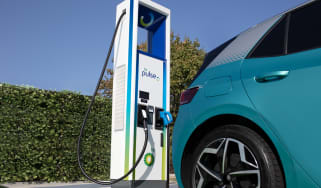
Complete guide to the BP Pulse (formerly Polar Plus) charging network
How much does it cost to charge an electric car?
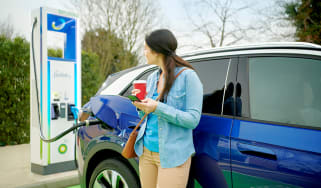
How much does it cost to charge an electric car?
Complete guide to the Gridserve (formerly Ecotricity) Electric Highway charging network
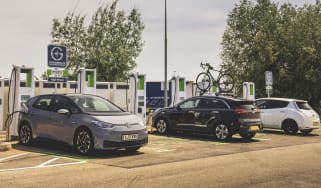
Complete guide to the Gridserve (formerly Ecotricity) Electric Highway charging network
Complete guide to the Fastned electric-car charging network in the UK
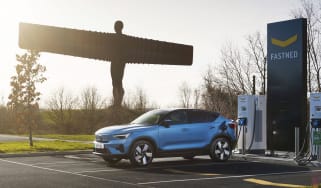
Complete guide to the Fastned electric-car charging network in the UK
MOST POPULAR
Fisker PEAR: first look at £25,000 electric city car
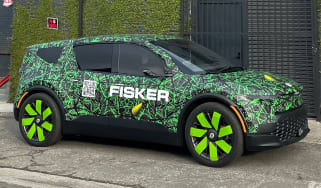
Fisker PEAR: first look at £25,000 electric city car
New electric cars coming in 2023 and beyond

New electric cars coming in 2023 and beyond
Top 10 best electric SUVs 2023
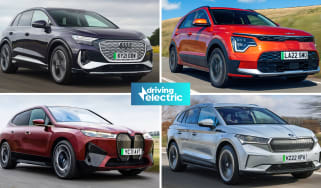
Top 10 best electric SUVs 2023
